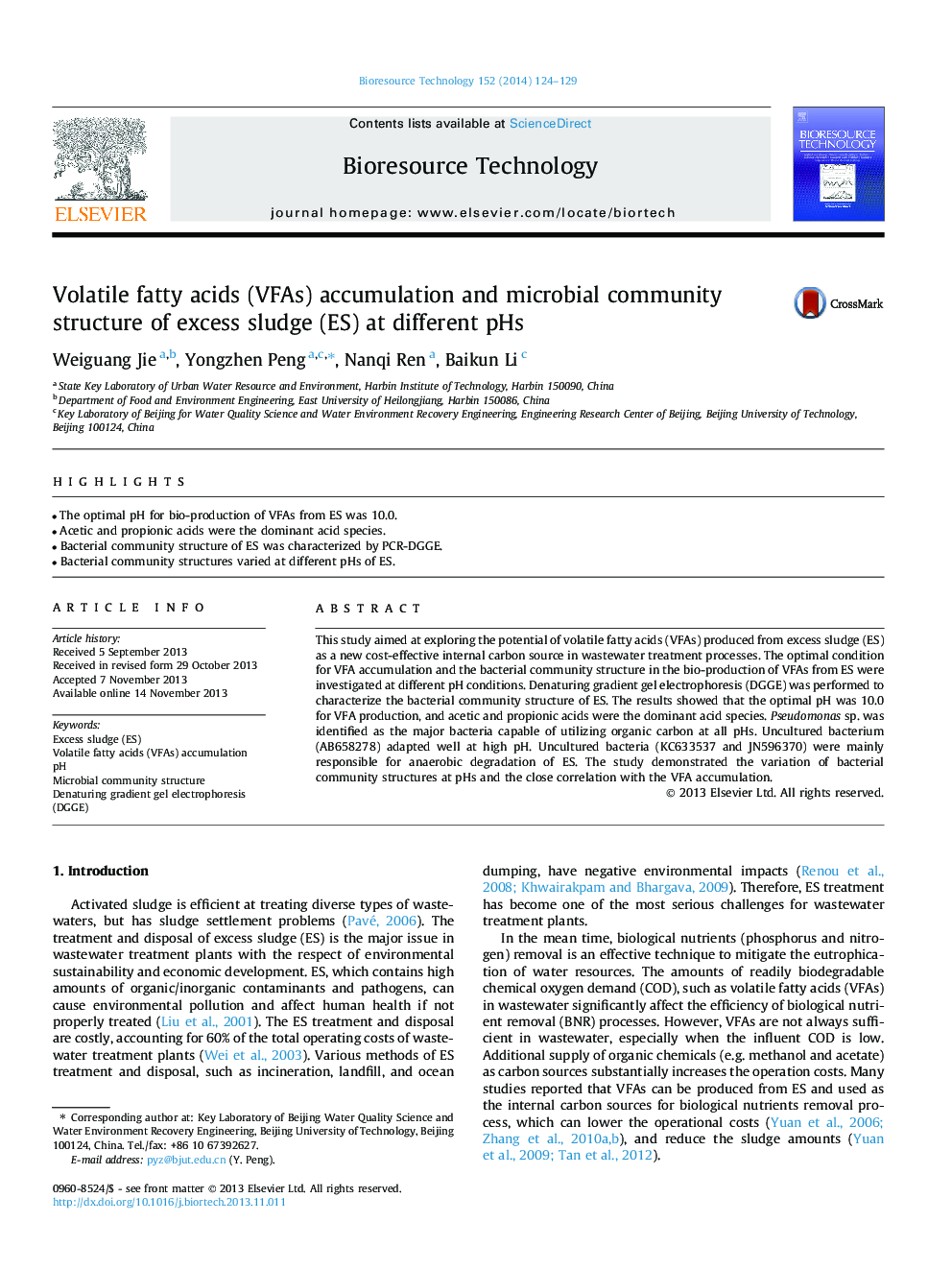| Article ID | Journal | Published Year | Pages | File Type |
|---|---|---|---|---|
| 7079142 | Bioresource Technology | 2014 | 6 Pages |
Abstract
This study aimed at exploring the potential of volatile fatty acids (VFAs) produced from excess sludge (ES) as a new cost-effective internal carbon source in wastewater treatment processes. The optimal condition for VFA accumulation and the bacterial community structure in the bio-production of VFAs from ES were investigated at different pH conditions. Denaturing gradient gel electrophoresis (DGGE) was performed to characterize the bacterial community structure of ES. The results showed that the optimal pH was 10.0 for VFA production, and acetic and propionic acids were the dominant acid species. Pseudomonas sp. was identified as the major bacteria capable of utilizing organic carbon at all pHs. Uncultured bacterium (AB658278) adapted well at high pH. Uncultured bacteria (KC633537 and JN596370) were mainly responsible for anaerobic degradation of ES. The study demonstrated the variation of bacterial community structures at pHs and the close correlation with the VFA accumulation.
Related Topics
Physical Sciences and Engineering
Chemical Engineering
Process Chemistry and Technology
Authors
Weiguang Jie, Yongzhen Peng, Nanqi Ren, Baikun Li,
